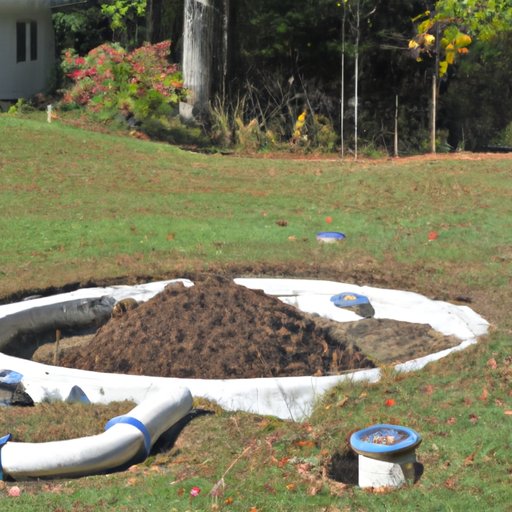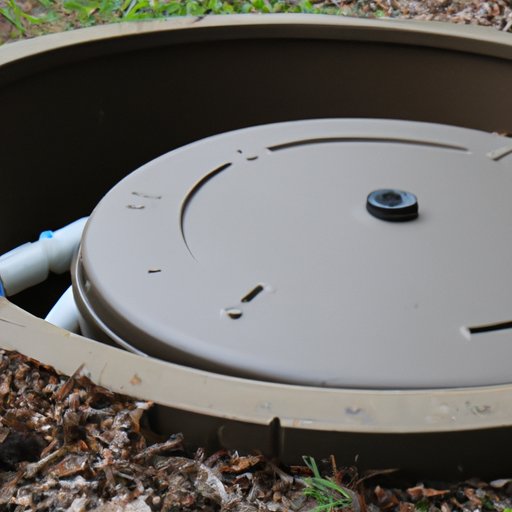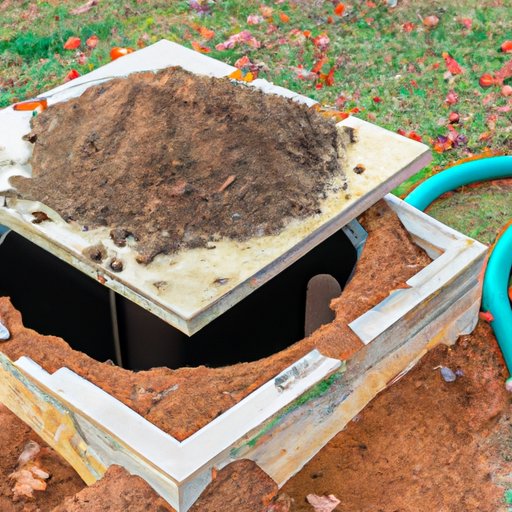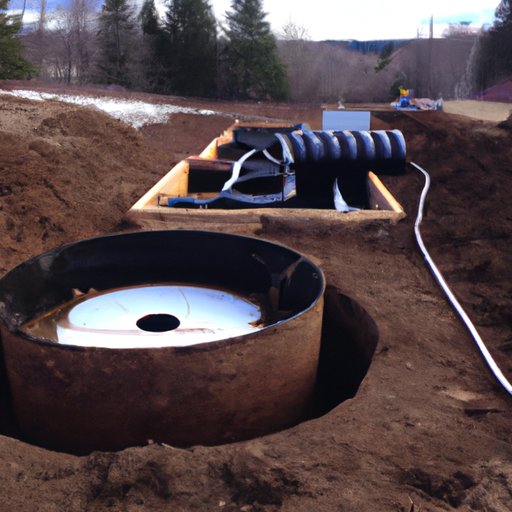Introduction
A septic system is an underground wastewater treatment system that is used to treat and dispose of wastewater generated by households or businesses. The purpose of a septic system is to contain, treat, and dispose of wastewater in an environmentally safe manner. This article will cover the basics of septic systems, including their components, operation, maintenance, and regulations. It will also provide an overview of septic tanks and their use. Finally, it will explore the environmental and financial benefits of a septic system.
Exploring the Basics of Septic Systems: How Does a Septic System Work?
To understand how a septic system works, it is important to first understand its components and the process of its operation. There are two main types of septic systems: conventional and alternative. Conventional systems consist of a septic tank and a drainfield, while alternative systems may include additional components such as a soil absorption system.
Types of Septic Systems
Conventional systems are the most common type of septic system. They consist of a septic tank and a drainfield. These systems use gravity to move wastewater from the septic tank to the drainfield. Alternative systems, on the other hand, rely on pumps to move wastewater from the septic tank to the drainfield. Some alternative systems may also include a soil absorption system, which uses a network of pipes to disperse wastewater into the ground.
Components of a Septic System
A septic system consists of several components, each with its own role in the system. The septic tank is the primary component of a septic system. It is a large, watertight container that stores wastewater until it can be treated. The drainfield is a network of pipes that distributes treated wastewater into the ground. Soil absorption systems are similar to drainfields, but they use a network of perforated pipes to disperse wastewater into the ground.
The Process of Septic System Operation
Septic systems operate by using natural processes to separate solids from liquids and break down organic materials. Wastewater enters the septic tank, where solids settle to the bottom and form a layer of sludge. The liquid portion of the wastewater is then transferred to the drainfield, where it is treated by bacteria and dispersed into the ground. The solid waste is broken down by bacteria in the septic tank and eventually exits the tank as a liquid.
A Comprehensive Guide to Septic System Operation and Maintenance
In order to keep a septic system functioning properly, it is important to follow certain maintenance practices. Regular inspections should be conducted to check for any signs of damage or wear. The septic tank should be pumped out every three to five years to remove any accumulated sludge. The drainfield should be checked for any signs of clogging or failure. Additionally, any plants or trees near the drainfield should be monitored to ensure they are not affecting its performance.
When troubleshooting or performing repairs, it is important to identify the source of the problem. Common issues include clogged lines, leaking pipes, or damaged components. To resolve these issues, it is necessary to inspect the entire system and make any necessary repairs. In some cases, it may be necessary to replace parts or even the entire system.

Understanding Septic Systems: What You Need to Know
As a septic system owner, it is important to understand the regulations and guidelines that apply to septic systems. Most states have laws that require septic system owners to obtain permits before installing or repairing a system. Additionally, many states require regular inspections and maintenance to ensure the system is functioning properly. It is also important to understand proper usage of a septic system. Wastewater should not be disposed of in the drainfield, and any items that cannot be broken down by bacteria should not be flushed down the toilet.

An Overview of Septic Tanks and Their Use
Septic tanks are a critical component of a septic system. They provide a storage area for wastewater, allowing solids to settle to the bottom and forming a layer of sludge. Septic tanks come in a variety of sizes and styles, and they can be made of concrete, fiberglass, or plastic. Each type of septic tank has its own advantages and disadvantages. For example, concrete septic tanks are more durable than plastic tanks, but they are more expensive.

The Benefits of a Septic System and How it Works
Septic systems provide numerous environmental and financial benefits. By treating and disposing of wastewater in an environmentally responsible manner, septic systems help protect groundwater from contamination. Additionally, they reduce the amount of wastewater that needs to be processed at a wastewater treatment plant, resulting in lower costs for homeowners.
Analyzing the Components of a Septic System and Their Functions
In order to understand how a septic system works, it is important to understand the roles of its components. The septic tank is the primary component of a septic system. It is a large, watertight container that stores wastewater until it can be treated. The drainfield is a network of pipes that distributes treated wastewater into the ground. Soil absorption systems are similar to drainfields, but they use a network of perforated pipes to disperse wastewater into the ground.
Conclusion
In conclusion, septic systems are an important part of wastewater treatment and disposal. Understanding how a septic system works, from its components to its operation and maintenance, is essential for septic system owners. Proper usage, maintenance, and repair are necessary to ensure a septic system is functioning properly and providing environmental and financial benefits. Ultimately, understanding the basics of septic systems is key to ensuring their effective operation.
(Note: Is this article not meeting your expectations? Do you have knowledge or insights to share? Unlock new opportunities and expand your reach by joining our authors team. Click Registration to join us and share your expertise with our readers.)
